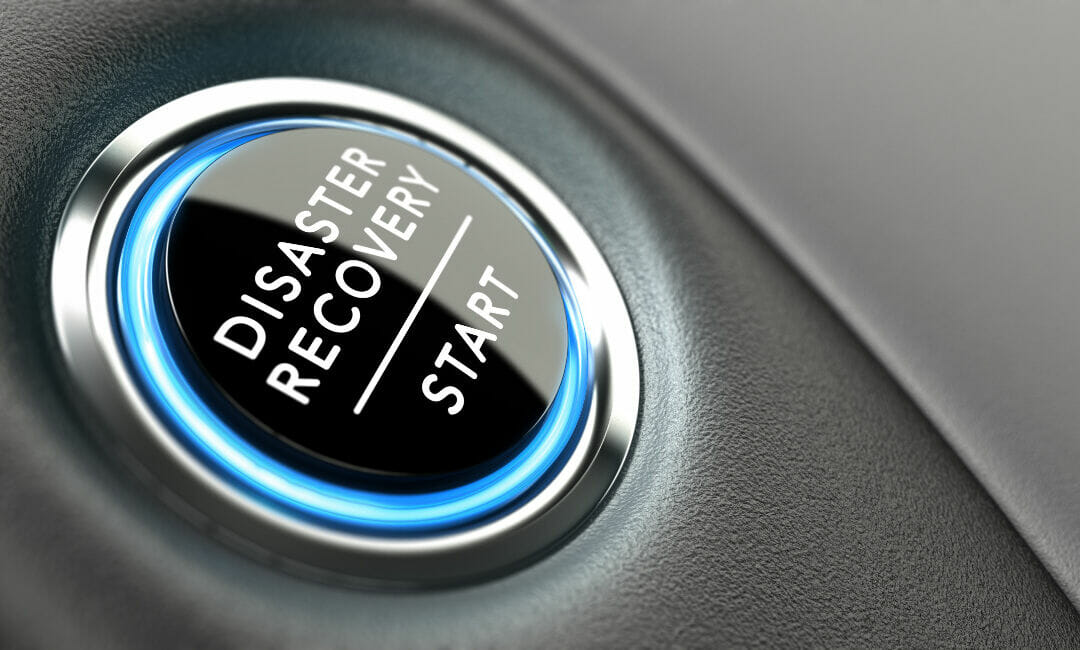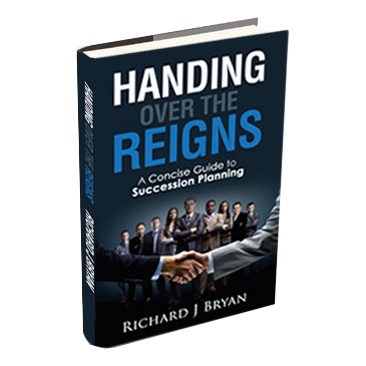How They’re Different—and Why You Need Both
In my travels on the succession planning keynote speaker circuit, my clients are there because they want to ensure their businesses are prepared for any eventuality. So, even though the topic of my talk is succession planning—creating a long-term strategy for leadership changes—the subject of disaster recovery planning usually comes up, too.
You’d be surprised how many people use the two terms interchangeably. But in reality, while both business continuity planning and disaster recovery planning involve many of the same tasks, they are actually two very different strategies. And, although I talk more often about succession planning, your business needs both! The past 18 months have given us countless insights into the broad category of “unforeseen circumstances,” haven’t they? So, with this in mind, I wanted to cover the basics of these two different—but equally important—plans.
What is Business Continuity Planning?
The key to understanding the differences between these two essential strategies lies in the word “continuity.” There are many kinds of “catastrophic events” that can impact business operations, from natural disasters or global pandemics to the sudden departure (or death) of key leadership. They all affect your enterprise in different ways, so it’s important that you’ve thought through a variety of scenarios—regardless of how challenging it is to dwell on them.
When creating a business continuity plan, you’ll evaluate the equipment, processes and personnel that are critical for your operations, so you can continue to operate without any major interruptions. This includes computer and communications systems, customer data, supply chain and distribution—and, of course, leadership.
As a succession planning keynote speaker, this last bit is the one on which I’m most heavily focused. But it doesn’t mean the others can be neglected. Here are some of my top tips.
1. Computer Systems + Staff. Obviously, the most desirable outcome is to keep your IT systems and staff operational as you weather whatever challenge you’re facing. Certainly, computer experts have always been considered “essential workers,” but nothing has ever put this fact into starker relief than the first big shutdown of last year.
All over the world, as the rest of the world was sent home with their box of files, skeleton crews of IT professionals donned their masks and stayed onsite to manage systems and servers. There has never been a better proof of concept for cloud-based computing—or, at the very least, an offsite or cloud-based backup.
A few years back, a car dealer acquaintance of mine—someone who ran 100 dealerships for a public company—lamented to me that he had to pay $1.5M for a backup server for his dealer group. What upset him the most was the fact that he was likely never going to use this piece of pricey hardware. All the same, in the interest of smart business contingency planning, he had to weigh this against the risk (and cost) of his entire system going down at once.
2. Customers + Supply Chain. Businesses that rely heavily on manufacturers and suppliers are also still reeling from last year’s delays. Ultimately, your customers must feel confident that the products or services you offer will continue, without lengthy interruption, regardless of what’s going on in your world—or the entire world.
When my father was forced to retire from our car dealership business early, due to a sudden and serious illness, this became a major concern for our company. We were running at a loss, and our car manufacturer partners were worried that we would not be able to pay for the hundreds of consignment vehicles—or even pay for the parts they were supplying to us.
Because we didn’t have a business contingency plan in place, our solution was lengthier (and less ideal) than we would have hoped. Ultimately, payments were made and relationships restored. But having a strategy would have helped us maintain confidence throughout.
3. Leadership + Communication. Communicating companywide directives across your entire enterprise is challenging enough during everyday operations—so it can be difficult to think about how you might do so during a crisis situation. But it’s also one of the most critical facets of a business contingency plan…which is something my family learned the hard way.
We experienced a very personal disaster when my father, who was the owner and CEO, became seriously ill and left the business at short notice. With absolutely no plan in place, company leadership fell to the technical successor: me. I use the word technical, because although I was theoretically next in line to lead the company, this transition wasn’t expected for another 10 years! At the time, I was a 28-year-old with virtually no leadership experience.
As I reluctantly took my place in the hot seat, I scrambled to develop and deploy a crisis communications plan, while also looking for someone to help me turn around our failing business. If I hadn’t found my mentor, Frank, so quickly, the bank would have begun to make decisions on our behalf—with potentially disastrous results. Planning ahead would have not only made this tricky transition easier tactically…but emotionally, too.
The bottom line is this: life happens, even in business. And, even though it’s tempting to put all of your time and focus into ordinary operations, it is absolutely essential that you craft a plan for the extraordinary. As my car dealer friend can attest, if you’re lucky, you’ll never use it.
What is Disaster Recovery Planning?
A 2017 survey by Deloitte concluded that “90% of businesses without a disaster recovery plan will fail after a disaster.” So what’s the real difference between business continuity planning and disaster recovery planning? While disaster recovery is really a subset of business contingency, it’s easiest to think of these in terms of how long each plan will stay in effect.
Business contingency, which is a close relative of succession planning, is a long-term process that will gradually unfold and evolve over several years. It may be simple or complex. Disaster recovery, by contrast, should be tactical, fast-acting and relatively turnkey, so that it can be deployed in seconds. Many businesses go wrong by simply not having a plan in writing; having a simple, documented strategy that you review on an annual basis is often sufficient.
Or, here’s another way to think of it. Without a long-term business contingency plan, almost any sudden change your company encounters can be disastrous, as it was for my family! Here are my own broad strokes, and what I would do differently today.
1. Insurance Takes Many Forms. Sure, having a corporate insurance policy will provide much-needed financial assistance during trying times. But the damage to your company’s internal culture—and your external reputation—can be positively ruinous if there is any confusion about crisis leadership. For this reason, it’s critical to have a short-term recovery plan for things like facilities, computers, data and other assets…and human resources, too.
Have a plan that clearly states who will be the leader of each part of the business going forwards, even if this is just an interim position while you either look for a successor externally, or give your internal candidate time to prepare to assume his or her new role. Think of this as a kind of “perception insurance” that will sustain your business while you find your feet again.
2. Communication is Everything. We all think we’ll be relatively clear headed in a crisis situation, don’t we? But the stark reality is this: even if we remain perfectly calm, cool and collected, a disaster is going to pull us, and every one of our employees, in a thousand different directions. It is much easier to plan this stuff when you are calm and thinking logically than when you are in the middle of a crisis…and in a highly emotional state.
When I took over our business so suddenly, our bank and manufacturing partners were understandably concerned that I lacked the experience to run such a large business. If I hadn’t managed to find an experienced CEO and business turnaround specialist to partner with, it seems unlikely that they would have backed my hastily-drawn plan for the business.
Indeed, with most franchises, a significant change in ownership triggers an automatic review of the franchise agreement. By contrast, if we’d had a solid disaster recovery plan, even if the new leadership wasn’t fully prepared for their new role, we would have at least had a sound communication strategy to alleviate anxieties—both internally, and externally.
If I had it to do over again, my plan would include pre-drafted boilerplate communications like press releases and employee, customer and supplier memos that were already 90% ready to go. Actually, scratch that! If I really had it to do over again, I would have been planning for all of these contingencies years in advance…making continuity, and not recovery, my reality.
So, how ready is YOUR business for the unexpected? To be notified of upcoming succession planning retreats, sign up for our mailing list.
Related Topics:
Business Contingency Planning: What, Why + How
Stepping Out, Not Down: Why Your Aging CEO Won’t Retire
The Role of the Board During Family Business Succession


